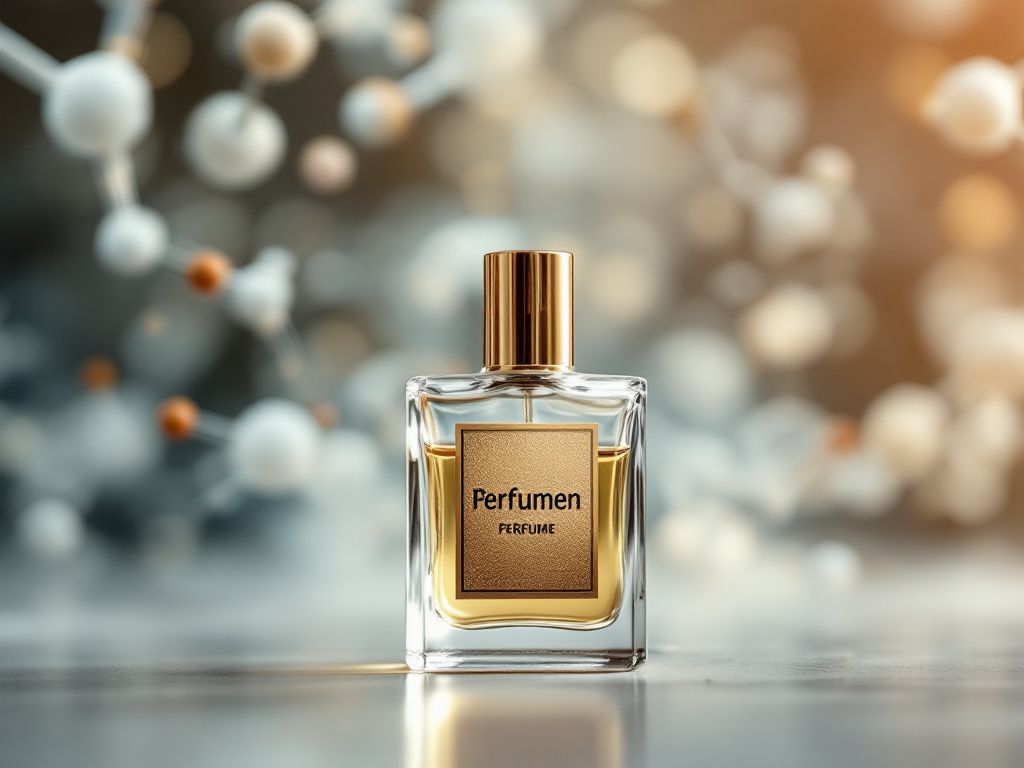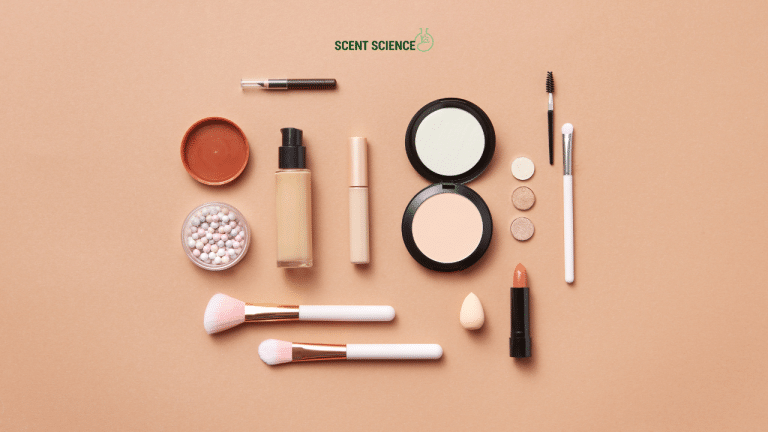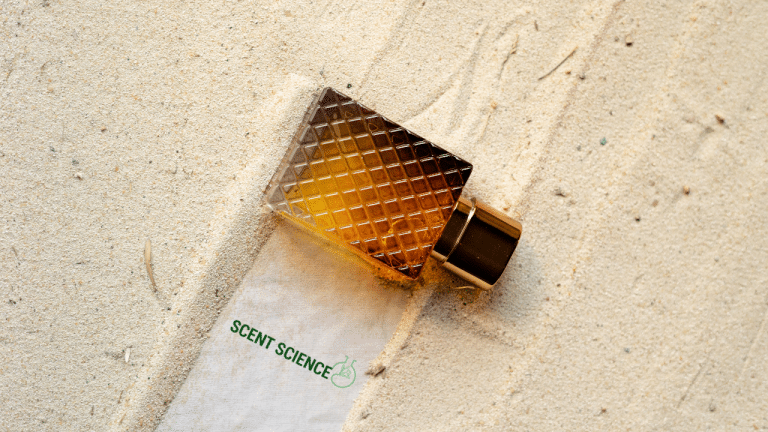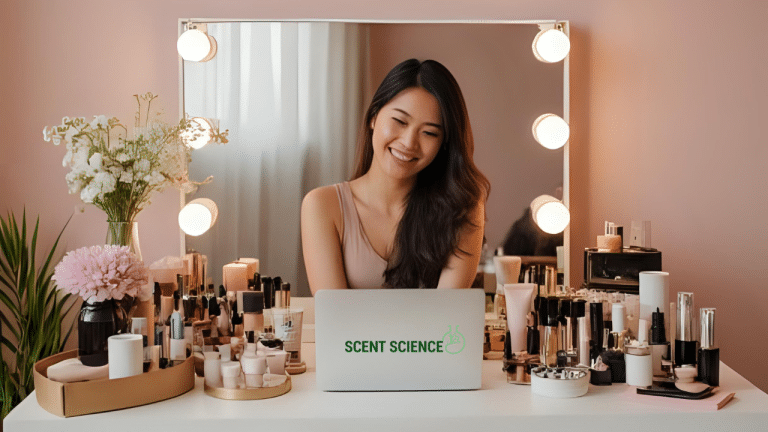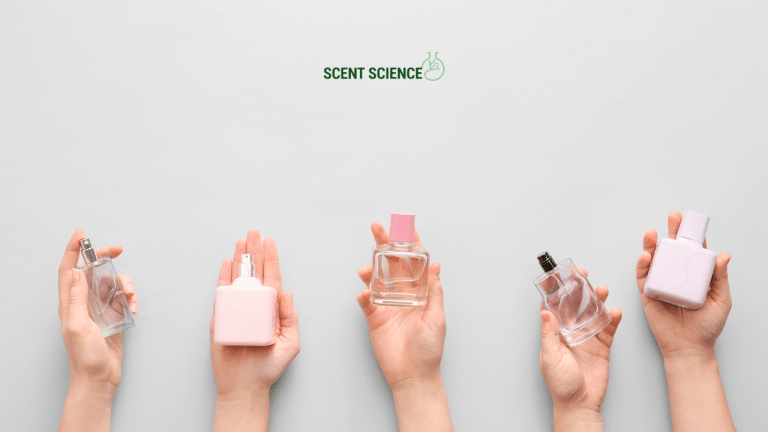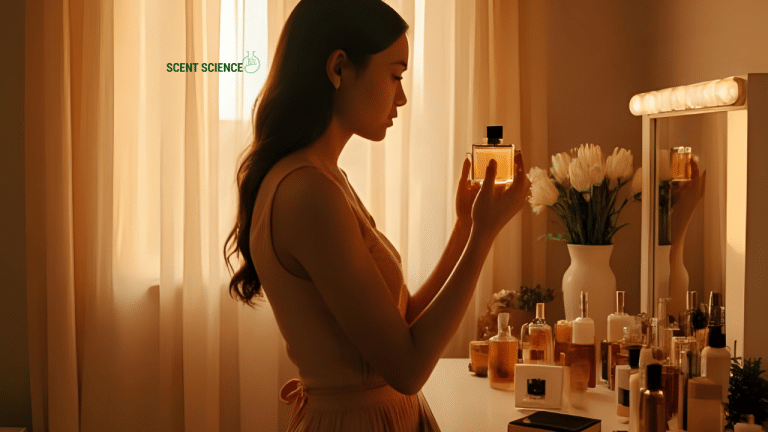Perfume, a luxurious blend of art and science, captivates our senses and emotions with its compelling allure. Yet, behind every enticing aroma lies a world of intricate chemistry that remains largely unseen. Understanding the chemical makeup of your perfume offers a fascinating glimpse into the molecular architecture that creates these enchanting scents. This guide delves deep into the perfume chemical formula, providing you with a well-rounded knowledge of its molecular structure and scent composition.
Table of Contents
ToggleThe Chemistry of Perfume: An Expert Overview
Perfume design is akin to symphony creation, where individual notes blend harmoniously to produce an evocative experience. These notes are crafted from volatile chemical compounds—ingredients meticulously selected to craft specific fragrances. Let’s explore the chemistry that shapes your favorite perfume, parsing the complexity of a perfume’s molecular structure.
The Building Blocks of Perfume: Essential Ingredients
At the atomic level, perfumes consist of compounds primarily derived from natural and synthetic sources. These components include:
- Essential Oils: Aromatic extracts from plants; e.g., lavender or rose.
- Synthetic Aromas: Laboratory-created to mimic natural scents or to invent novel fragrances.
- Fixatives: Substances like musk that stabilize and enhance the longevity of perfume.
- Solvents: Typically alcohol, used to dissolve and disperse the scent compounds for even application.
Understanding the roles and interplays of these ingredients is crucial to appreciating how perfumes coalesce at the molecular level.
The Molecular Structure: How Does it Shape Scent?

A perfume’s scent is primarily determined by its molecular structure. The scent composition results from the specific arrangement and chemical nature of its molecules, which interact with olfactory receptors in our nose.
Key Molecular Types:
- Monoterpenes: Found in citrus oils, they are simple two-isoprene units offering zesty fresh aromas.
- Sesquiterpenes: More complex, these provide deeper, longer-lasting notes, often found in sandalwood.
- Aromatic Compounds: Such as benzyl acetate, which conveys floral nuances.
- Esters and Aldehydes: These make molecules highly volatile, delivering a powerful first impression but evaporating quickly. Aldehydes are dominant in perfumes like Chanel No. 5.
Real-World Example: Chanel No. 5
An iconic perfume that demonstrates an expert blend of aldehydes to create an effervescent top note. By integrating diverse molecules with contrasting vapor pressures, it achieves a distinctly complex floral aroma.
The Role of Volatility in Scent Composition
Volatility is a core concept within the perfume chemical formula, directly impacting scent composition and how a fragrance unfolds over time.
- Top Notes: Highly volatile, delivering an immediate, impactful first impression.
- Middle Notes: Evaporate slowly to define the heart of the fragrance.
- Base Notes: Least volatile, offering depth and longevity to the overall scent.
Technological Advancements: High-Performance Liquid Chromatography (HPLC)
HPLC has revolutionized how perfumers analyze, optimize, and refine scents. By breaking down complex fragrance formulas into their individual components, perfumers achieve precision and consistency in scent development.

Crafting Excellence: Standards and Best Practices
Professional guidance and industry best practices are integral to creating superior perfumes. Key organizations, such as the International Fragrance Association (IFRA), play a pivotal role in setting safety standards and regulations.
Industry Standards for Composition and Safety 🛡️
- IFRA Guidelines: These dictate permissible ingredients and concentrations to ensure consumer safety.
- Good Manufacturing Practices (GMP): Best practices for manufacturing that ensure quality and consistency across batches.
Sustainability and Ethical Sourcing
Perfumers today face the challenge of balancing traditional artistry with modern sustainability practices. Efforts in ethical sourcing—including fair trade and the use of renewable resources—represent a significant trend in industry best practices.
Crafting a Perfume: A Step-by-Step Technical Walkthrough
Creating a perfume involves careful orchestration of raw materials, guided by scientific methods and artistic instinct. Here is a technical breakdown of the process:
- Conceptualization and Selection: Determining the essence or theme of the fragrance.
- Formulation Design: Crafting a balanced perfume chemical formula with a pleasing scent pyramid—top, middle, and base notes.
- Sample Testing and Adjustment: Refining the formula using sampling methods to achieve the desired olfactory profile.
- Stability Testing: Ensuring the fragrance maintains its integrity under varying conditions.
- 5. **Manufacturing and Quality Control: Using controlled environments and predefined manufacturing protocols to finalize production.
Real-World Application: Estee Lauder’s Scent Development Case Study

Estee Lauder’s pioneering use of controlled environments in the formulation and symbiotic blending of natural and synthetic compounds exemplifies how precision in scent development can lead to commercial success. 💡
Advanced Analysis: Recent Studies and Findings
Ongoing research continually enhances our understanding of scent molecules and their impacts. Recent scientific studies have underscored:
- Neuroscience of Olfaction: Research into how scent molecules interact with brain receptors, influencing perception and memory recall.
- Environmental Impact Assessments: Studies examining sustainable practices in material sourcing and waste reduction.
Conclusion: Embrace the Science of Scent with Confidence
Understanding the perfume chemical formula and its intricate molecular structure can enrich your appreciation and capability to select or even compose your own fragrance. With this guide, you possess a toolkit not only of knowledge but also of insight into how science, art, and industry standards converge to produce the perfumes that captivate our senses. The world of fragrance is ever-evolving, yet your enhanced understanding will anchor you in making informed choices in a fast-paced industry.
Further Reading and Resources 📚
- For detailed methodologies, refer to the IFRA’s material on Guidelines and Safety Practices.
- Check out comprehensive publications on scent science, including **The Chemistry of Fragrances and related whitepapers from cosmetics journals.
Stay curious and continue exploring this fascinating intersection of art and science!
Frequently Asked Questions
What are the benefits of using a hair mask in my hair care routine?
Using a hair mask can provide several benefits, including hydration, smoothing, strengthening, curl definition, heat protection, and damage repair. Hair masks infuse the hair with moisture, help coat the hair shaft to seal split ends, reduce breakage, and protect the hair from heat styling and environmental damage[1][4].
What ingredients should I look for in a hair mask?
Effective hair masks often include ingredients such as coconut oil, argan oil, shea butter, honey, avocado oil, green tea, and coconut water. These ingredients provide nourishment, moisturize, and protect the hair, offering benefits like softening, moisturizing, and protecting against damage[2][5].
How often should I use a hair mask in my routine?
You should use a hair mask whenever your hair feels dry, unmanageable, or in need of intense hydration. This can vary depending on your hair type and needs, but generally, using a hair mask once or twice a week can help maintain healthy and moisturized hair[1][4].
How do I apply a hair mask for the best results?
To apply a hair mask effectively, shampoo your hair first, then apply the mask, focusing especially on the ends where hair tends to be the most damaged. Leave the mask on for anywhere from 10 minutes to overnight, depending on the type of mask and your hair’s needs[1][4].
References
